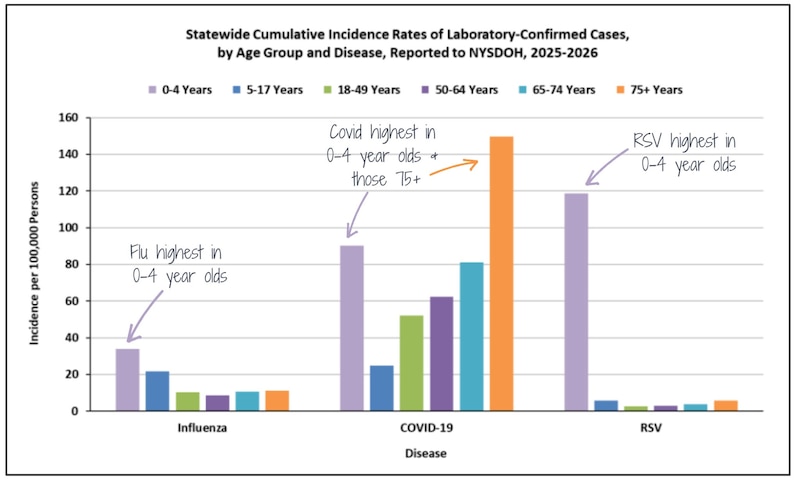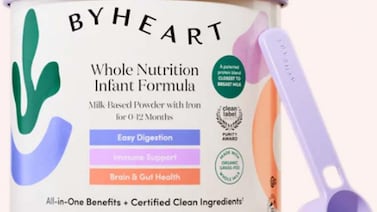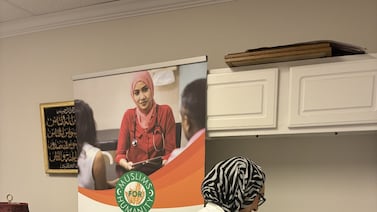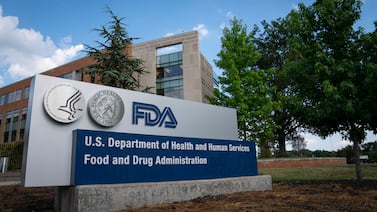This article originally appeared at Your Local Epidemiologist New York. Sign up for the YLE NY newsletter here. Public health, explained: Sign up to receive Healthbeat’s free New York City newsletter here.

To each and every runner, volunteer, spectator, and crew member who participated in the NYC Marathon this past weekend, you are incredible. The sheer scale of coordination and determination to pull off this event shows us what New York is all about — grit, community, and dreams.

And it’s not just the runners. The marathon couldn’t exist without public investment — in parks, clean air, and safe roadways, as well as the labor it takes to keep the city moving. I want to give a special shoutout to the city sanitation department as well, as they did some heavy lifting to get the streets back in good shape for Monday.
Thank you to everyone who made this possible, and to those who lined the streets to cheer on Sunday. I’ll never forget the roar of the crowds. And how sore I was after. 😅
Now let’s get into this week’s Dose. We’ll cover updates to SNAP funding in New York, new data on declining tobacco use among teens, and respiratory viruses.
SNAP state of emergency in New York
Due to the ongoing federal government shutdown, a timeline for food aid for nearly 3 million New Yorkers is still unclear. Last week, Gov. Kathy Hochul declared a state of emergency to free up an additional $65 million in state funding for food pantries and hunger relief — enough to cover 40 million meals. The state also began mobilizing SUNY and Empire Corps teams to help food banks and expand the Supplemental Nutrition Assistance Program outreach on college campuses.
Then came a wave of legal pressure. On Oct. 31, two federal judges ruled that the SNAP freeze was unlawful. In response, the U.S. Department of Agriculture announced it would issue half of November’s SNAP benefits using contingency funds. But then, on Tuesday, President Donald Trump, in defiance of the two court orders, threatened to deny the assistance for the 42 million low-income Americans until the end of the shutdown.
Hours after that, White House press secretary Karoline Leavitt told reporters the administration would fully comply with the court and provide the partial food stamp payments. The back and forth on this continues - and has been exhausting, and only compounds the uncertainty many families are experiencing as they think about food for the next month.
Hochul’s emergency funds — $40 million for the Hunger Prevention and Nutrition Assistance Program and $25 million for Nourish NY — are filling some gaps. And these new emergency funds are on top of the $41 million in state funds for food assistance issued earlier last week, bringing the total state emergency funds to $106 million. But as Hochul emphasized, “No state can replace SNAP.” The federal program provides $650 million per month to New York residents. If half gets paid out with USDA contingency funds (~$325 million), and the state has committed $106 million, New York will have ~$431 million for SNAP in November — $219 million short of the need.
This isn’t only an economic issue. Nutrition insecurity worsens chronic disease, disrupts childhood development, and places enormous stress on mental health. Ensuring consistent food access is foundational to public health.
What you can do
- If you’re a SNAP recipient: Monitor your EBT card closely and check otda.ny.gov for updates.
- If you’re not: Volunteer or donate to your local food pantry. They need it now more than ever.
- If you want to make your voice heard: Call your reps. Tell them hunger shouldn’t be a political tactic.
I’ll keep watching this story.
Tobacco use in New York hits a record low
Great news: Last month, a New York State Department of Health report revealed that youth tobacco use in the state has declined to its lowest level since the agency started measuring it 25 years ago. The agency found that fewer high school students reported using cigarettes, e‑cigarettes, or other tobacco products last year.

Why it matters
- If fewer young people pick up tobacco, fewer will carry nicotine dependence, lung disease, or cardiovascular risk into adulthood.
- Lower youth uptake often predicts lower adult usage in the years ahead.
- It shows that there is potential to move the dial.
The key here, though, is understanding what actually caused the reduction. I think the decline is likely due to a combination of new policies, outreach efforts, and educational initiatives. Over the past six years, several state policies have been implemented, including bans on flavored e-cigarettes, an increase in the minimum purchasing age, and restrictions on tobacco price discounts. The New York State Quitline also developed a program to help teens quit smoking called “Drop the Vape.”
While we won’t be able to determine the exact impact each of these changes had on reducing tobacco use among teens, gathering more data would help us better direct resources in the future.
Infectious disease ‘weather report’
New York state and New York City have rolled out updated, more user-friendly reports and dashboards to track viruses this season. The standout feature for both is the summary boxes at the top of each report showing which viruses are ramping up and causing the most disease.
Covid-19: Decreasing in both New York City and across the state. We are in a Covid lull, but likely not for long. Wastewater data (via Biobot and WastewaterSCAN) are showing early signs of a small uptick in the Midwest, a sign Covid might begin increasing elsewhere, too.
Influenza: Rising steadily across the state and city.
RSV: Also increasing across many counties statewide and in New York City, mostly in the youngest children.
Who’s most affected?
- Infants and toddlers (ages 0-4) are seeing the highest rates of flu and RSV.
- Covid is hitting both the youngest children and adults over 75 the hardest.

What you can do right now
- Get vaccinated. It’s not too late. Flu, updated Covid, and RSV vaccines (for eligible groups — see this YLE National post) are all available. I’m getting my flu shot this week.
- Layer protections. If you’ll be around young kids, older adults, or those who are immunocompromised, consider masking in crowded indoor spaces like the grocery store, airports, or on the train/subway.
Bottom line
From marathons to sanitation crews and food banks to virus tracking, there’s a web of systems and people keeping New York running. It’s a reminder that public health is public infrastructure. And we need to keep investing in it and ensuring it has what it needs to keep serving New Yorkers.
Love,
Your NY Epi
Dr. Marisa Donnelly, PhD, is an epidemiologist, science communicator, and public health advocate. She specializes in infectious diseases, outbreak response, and emerging health threats. She has led multiple outbreak investigations at the California Department of Public Health and served as an Epidemic Intelligence Service Officer at the Centers for Disease Control and Prevention. Donnelly is also an epidemiologist at Biobot Analytics, where she works at the forefront of wastewater-based disease surveillance.







